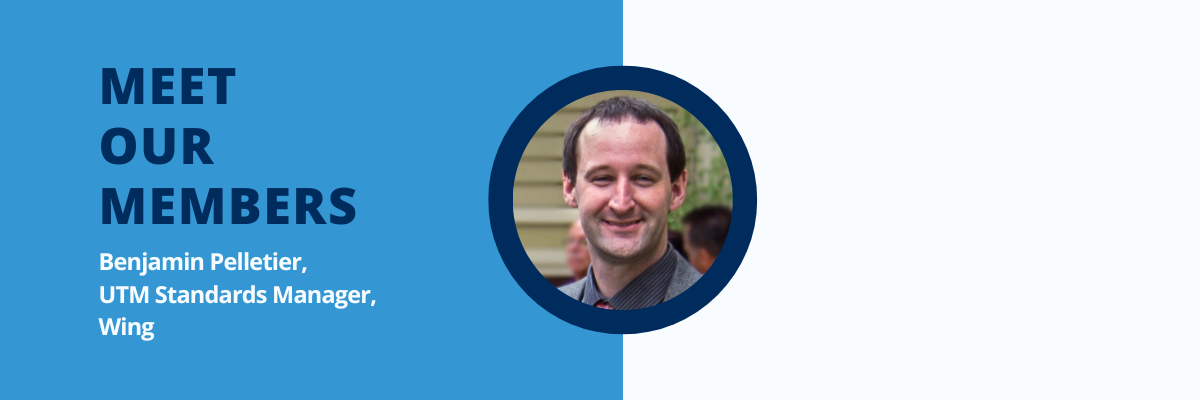Welcome to the new InterUSS ‘Meet Our Members’ series, offering you a window into the dynamic world of the InterUSS Platform and the minds driving its progress. In this interview series, we will introduce experts from our member companies who, through their dedicated work, are at the forefront of advancing UTM applications.
In this first edition, we present Benjamin Pelletier, Technical Steering Committee Chair at InterUSS and UTM Standards Manager at Wing. With two decades of experience in system engineering, software development, and simulation, Benjamin brings a wealth of knowledge and insight to the InterUSS Platform. Explore his perspectives and involvement in InterUSS, the key lessons he has taken away from this initiative, and the importance of automated testing for UTM and U-Space deployments.

Hi Benjamin, many thanks for agreeing to participate in this interview. I would like to start off with a very essential question: in a very straightforward and simple way, what is InterUSS about?
InterUSS Platform is an industry collaboration to build open-source software and tools for UTM with neutral governance as a Linux Foundation project. Our work includes an implementation of a software tool required by ASTM UTM standards (DSS) and an automated testing framework (open source test suite) dedicated to demonstrating compliance with requirements in a manner that is acceptable to regulators.
What immediate word comes to your mind when you think about InterUSS?
Interoperability, as it’s right there in the name! Even when our solutions don’t involve USSs communicating directly with each other (as might be the case with certain automated test configurations), we still emphasize interoperability in that every USS’s test expectations should be interoperable in order to minimize the regulatory compliance burden.
Why did you decide to take part in this project, and what have you taken away from it so far?
I’ve worked in systems engineering, simulation, and software for a number of different entities and projects with inspiring applications. With InterUSS, the opportunity to reach across industries, regulators, standards bodies, and other innovators to solve interoperability together is truly so unique. I appreciate the opportunity to work with members and contributors around the world to build truly democratized open source solutions.

Could you share any success stories or milestones achieved since the moment you first got involved in InterUSS?
My favorite moment was probably when industry collaborated to produce a DSS implementation as well as to ensure demo-level USS implementations to demonstrate ASTM F3411 network remote identification over a span of only a few months, culminating in two demonstrations in two different countries with more than ten organizations participating. Having the positions of physical aircraft from many different companies all show up on many companies’ different displays with only a short, collaborative development period was very satisfying.
In your view, what benefits do member companies gain from InterUSS’s collaborative and technical approach?
They get to leverage the shared benefits of member collaboration, going outside of their usual realm for their company and working with incredibly smart people across diverse companies for this shared goal and need! In exchange for putting in a bit more effort to align internal implementations with an industry-consensus approach, a member company can use all the development efforts and lessons learned by other member companies and avoid the need to dedicate resources to reinvent those wheels.
Most people know InterUSS from your presentations on automated testing. If USSs and USSPs are just now starting to map what leveraging and implementing automated testing means for them, what should they know and be considering now?
The main difference between automated testing and manual testing is that automated testing requires automated means to actuate and measure the system under test, and these means are usually provided by the implementer of the system under test. To make it easy to automate testing of a system, make sure when building that system that there is a clear interface between the core system being tested and the inputs and outputs of that system – this should make it easy to swap out the normal means of providing inputs to (and accepting outputs from) the system (e.g., a graphical user interface) with automation compatible with automated testing. Considering and helping to develop the APIs in InterUSS’s automated_testing_interfaces repository is a great way to do this.